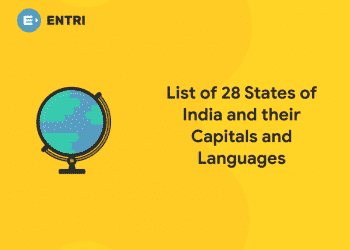Table of Contents
World Hydrography Day is celebrated on June 21 every year, since 2005. It is celebrated to raise awareness of the importance of hydrography and to publicise the work of hydrographers all around the world. Hydrography is the science that measures and describes the physical features of the navigable portion of the Earth’s surface and adjoining coastal areas.International Hydrographic Organization (IHO) proposed World Hydrography Day in the United Nations. World Hydrography Day is an opportunity for hydrographers around the globe to highlight the significance and importance of their activities. Also hydrographers based on data received suggests initiatives that support the safety of navigation, the protection of the marine environment, coastal zone management, marine spatial data infrastructures, defence and security, resource exploration, and all other components of the blue economy. In this article we will check the significance, theme and history of World Hydrography Day
Hydrography and it’s Significance
Hydrography is the branch of applied sciences which deals with the measurement and description of the physical features of oceans, seas, coastal areas, lakes and rivers, as well as with the prediction of their change over time. The important factor of hydrography is to provide safety of navigation and in support of all other marine activities, including economic development, security and defense, scientific research, and environmental protection of country.
Hydrographer measures and searches for rocks and wrecks that could be hazardous to navigation. They also collect information on water levels, tides, currents, temperature and salinity. Hydrographers conduct hydrographic surveys to measure the depth and bottom configuration of water bodies. The data’s received from these surveys are used to update nautical charts and develop hydrographic models. The information gained from these is vital on safer navigation in the ocean and to understand our nation’s waterways.
Other Important benefits of Hydrography is as follows-
– Resource exploitation – fishing, minerals
– Environmental protection and management
– Maritime boundary delimitation
– National marine spatial data infrastructures
– Recreational boating
– Maritime defense and security
– Tsunami flood and inundation modeling
– Coastal zone management
– Tourism
– Marine science
Download Entri and attempt free Mock Tests for various government exams
How Hydrography is carried out?
Hydrographers conduct hydrographic surveys to measure the depth and bottom configuration of water bodies. This is done mainly with specialized ships and boats with echo sounders and sonars. Also they use survey aircraft fitted with lasers and data can be derived from satellite observations which helps in monitoring tides and currents.
World Hydrography Day 2023 Date: 21st June
World Hydrography Day is observed globally on 21st June every year. The idea of the creation of World Hydrography Day belongs to the International Hydrographic Organization (IHO).
History of World Hydrography Day
The International Hydrographic Bureau was established in 1921, for the purpose of providing a mechanism for consultation between governments on matters such as technical standards, safe navigation and the protection of the marine environment. Which later in 1970, changed it’s name to International Hydrographic Organization (IHO).
IHO first proposed the concept of a World Hydrography Day in 2005 at United Nations General Assembly. This idea got acceptance from the United Nations General Assembly in Resolution A/RES/60/30 Oceans and the law of the sea with the aim of giving publicity to its work at all level and of increasing the coverage of hydrographic information on a global basis. Also urged all States around globe to work with IHO to promote safe navigation, especially in the areas of international navigation, ports and where there are vulnerable or protected marine areas. The first World Hydrography Day was celebrated in 2006.
Download Entri and practice free Quiz and boost your exam preparation
World Hydrography Day 2023 Theme
The theme for World Hydrography Day 2023 is “Hydrography – underpinning the digital twin of the ocean”
The World Hydrography Day theme for 2022 is “Hydrography – contributing to the United Nations Ocean Decade.”
The theme for the year 2021 was “100 years of international cooperation in hydrography”
How World Hydrography Day is celebrated?
World Hydrography Day is celebrated based on the theme selected, which is selected by the Member States of the International Hydrographic Organization (IHO). Based on the theme, IHO develops wide range of activities. Such as-
- Awards
- Conferences
- Seminars
- Workshops
- Lectures
- Dinners
- Public events
- Demonstrations
- Promotional material
Also the IHO Secretariat will post Member State and stakeholder initiatives on the dedicated page on the IHO website and/or social media outlets. Alternatively, contributors are invited to post on their own social media outlets and tag the IHO. Suggested hashtags include #WorldHydrographyDay and #WHD.
World Hydrography Day- Messages
- With the increasing population, we all need to stay alert, and on this extraordinary day, let’s take an initiative that would help us conserve our marine resources.
- Hope we all can take out some time from our busy schedule and plan out something to protect our mother Earth’s marine resources on this great day.
- This day is celebrated to acknowledge the work of IHO and to spread the importance of hydrography.
- It’s us who can save Earth’s resources. Let us contribute to this cause by celebrating this great day.
- feel it’s us who can play a very crucial role in this hydrography day to conserve our marine resources. We all need to take a moment out to help each worker of the organization and acknowledge their work.
Check Here:
- Weekly English Vocabulary Based on Hindu Editorial 2023 June 11
- List of Geographical Indications (GI) Tags in India
- Top Weekly Current Affairs for all Competitive Exams 2021 May 31 to June 06
- List of International Awards Received by Narendra Modi
- World Blood Donor Day 2022: Theme, History and Significance
How you can use Entri app for your exam preparation:
- Entri provides an online platform to help you prepare for competitive exams.
- Download for free of cost and get access to video classes, exams and study cards with a single subscription fee.
- You can access full length mock tests and previous year question papers.
Hope you have benefited from this article. Check us for further details. Entri wishes you all the best for your upcoming exams















